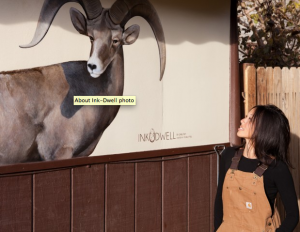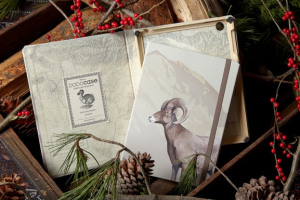Jane Kim doesn’t believe in creating “art for art’s sake.” The SF-based artist and science illustrator believes that art can be used as a tool, as an avenue to draw attention to important issues that were previously ignored. This methodology is abundantly effective in Migrating Murals, a public art installation that traces the migration paths of endangered species. Her stunning, expansive pieces are hard to ignore, opening the doors to conservational dialogue that had previously been silenced.
We had the opportunity to chat with Jane about her artwork, her approach, and her vision for the future. Take a look at the interview below:
WM: Migrating Murals, a project that has been talked about by everyone from Oprah to National Geographic, uses art to deliver awareness about endangered species. Can you tell us a little bit more about how this project was borne?
JK: For a while, I was really feeling like I wasn’t that satisfied with the world of art. I’m not trying to criticise it – But on a personal level, I was questioning why I was making art. I kind of came to a point where I realized I was more excited to go to a science museum than to a modern art museum.

I went to CSUMB to get my Science Illustration certificate and recognized that straight scientific illustration was lacking the emotional connection. While I was in the program, I was on the road a lot, commuting from Monterey Bay to SF, and I would often find myself wishing there was something visual to tell stories about the land we were driving on.
Then, I got to spend a summer at the Sierra Nevada Research Institute in 2010. That’s when I first learned about the Sierra Bighorn and its incredible story. The 395 corridor is a perfect location for my painting. it hugs the range that the sheep live in, but they’re so high up that they’re not visible; they’re super elusive. I felt that bringing an animal that’s hard to see to the forefront, making it easy to see, will make people talk about it.
WM: How do you feel that art can be used to create a meaningful dialogue?
JK: I find so much inspiration from our planet. Art offers a visceral connection that captivates an audience. If it’s visually moving, it will get the audience’s attention… And if they learn a little more about the story behind that piece, it will move them.
WM: Your installations represent a convergence of art and science. Do you think that art can be used as a tool to make important environmental issues for digestible – and more important – to our society?
JK: I absolutely feel that way. Art is powerful and can be completely unpolitical. it can teeter on a lot of worlds that may not very well cross over. Conservation is usually very political; it makes many groups of people very angry. Art can be an unbiased voice that informs and helps people form relationships with the subject.
I do feel that art has a reputation of being inaccessible, and it can be viewed as being elitist. I would like to break that mold and show that art is all around us, all the time. Public art that allows people to view works outside a gallery is so important to me.
WM: How do you think that your science background dictates your art?
JK: What I do see is much more of a focus, direction and focus. Before I got my certification, I knew I was trying to do something – there were always pieces of nature creeping back into my works – But i didn’t know why. Now I know.

WM: Your experience is prolific; you’ve been a Facebook and Recology Artist in Residence, and you recently received your Science Illustration certificate from CSU. Do you feel like this environmentally-focused pathway will dictate the rest of your career?
JK: Yeah, I definitely think so. I’m currently working on the biggest project of my career for the centennial celebration; I feel honored to be working with such inspiring artists. In honor of Cornell Lab of Ornithology’s centennial celebration, I will be working on a 100×40 foot mural that depicts the evolution of birds. It will total 300 species. Artists Maya Lin and James Prosek are also completing pieces for the celebration; I feel honored to be working alongside them.
Love Jane’s work as much as we do? This holiday, you can give a meaningful (not to mention beautiful) gift thanks to DODOcase. DODOcase x Ink Dwell are joining forces to offer Endangered Species: Bighorn Sheep, a limited edition collection of iPad covers that depict Kim’s inspiring illustrations. Thirty percent of proceeds go to fund the Migrating Mural and its nonprofit partner, the Eastern Sierra Interpretive Association.
Image Credit: [Cody Tuttle]
Categories: Featured , Fun , Inspiration , San Francisco Bay Area News
Share





